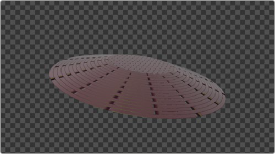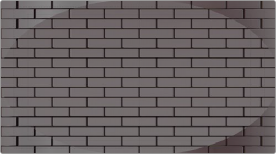
< Previous | Contents | Next >
The OpenGL renderer takes advantage of the GPU in your computer to render the image; the textures and geometry are uploaded to the graphics hardware, and OpenGL shaders are used to produce the result. This can produce high-quality images that can be perfect for final rendering, and can also be potentially orders of magnitude faster than the software renderer, but it does pose some limitations on some rendering effects, as soft shadows cannot be rendered, and the OpenGL renderer also ignores alpha channels during shadow rendering, resulting in a shadow always being cast from the entire object.

Don’t Forget That You Can Combine Rendered Scenes in 2D
While it may seem like an insurmountable limitation that you can’t output both soft shadows and depth of field using the same renderer, don’t forget that you can create multiple 3D scenes each using different renderers and composite them in 2D later on. Furthermore, you can also render out auxiliary channels that can be used by 2D image processing nodes such as AmbientOcclusion, DepthBlur, and Fog to create pseudo-3D effects using the rendered images.
Don’t Forget That You Can Combine Rendered Scenes in 2D
While it may seem like an insurmountable limitation that you can’t output both soft shadows and depth of field using the same renderer, don’t forget that you can create multiple 3D scenes each using different renderers and composite them in 2D later on. Furthermore, you can also render out auxiliary channels that can be used by 2D image processing nodes such as AmbientOcclusion, DepthBlur, and Fog to create pseudo-3D effects using the rendered images.
Don’t Forget That You Can Combine Rendered Scenes in 2D
While it may seem like an insurmountable limitation that you can’t output both soft shadows and depth of field using the same renderer, don’t forget that you can create multiple 3D scenes each using different renderers and composite them in 2D later on. Furthermore, you can also render out auxiliary channels that can be used by 2D image processing nodes such as AmbientOcclusion, DepthBlur, and Fog to create pseudo-3D effects using the rendered images.
On the other hand, because of its speed, the OpenGL renderer exposes additional controls for Accumulation Effects that let you enable depth of field rendering for creating shallow-focus effects. Unfortunately, you can’t have both soft shadow rendering and depth of field rendering, so you’ll need to choose which is more important for any given 3D scene you render.
OpenGL UV Renderer
![]()
When you choose the OpenGL UV Renderer option, a Renderer3D node outputs an “unwrapped” version of the textures applied to upstream objects, at the resolution specified within the Image tab of that Renderer3D node.


A normally rendered 3D scene (left), and the same scene rendered using the OpenGL UV Renderer mode of the Renderer3D node (right)
This specially output image is used for baking out texture projections or materials to a texture map for one of two reasons:
— Baking out projections can speed up a render.
— Baking out projections lets you modify the texture using other 2D nodes within your composition, or even using third-party paint applications (if you output this image in isolation as a graphics file) prior to applying it back onto the geometry.